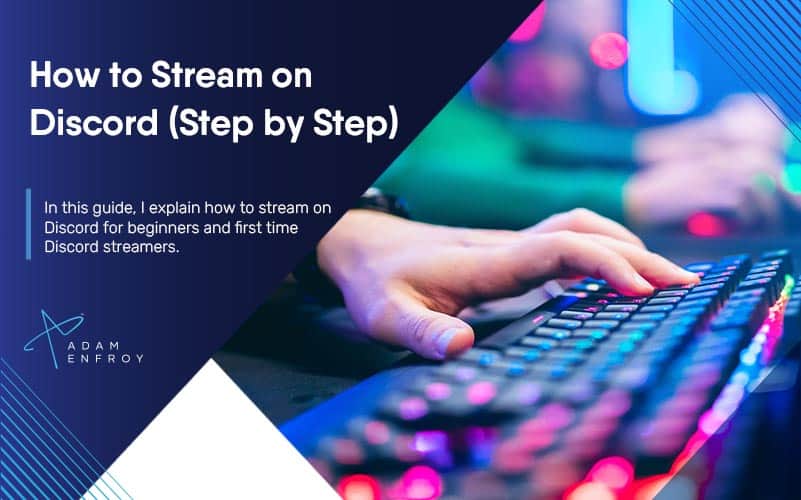7 Simple Steps to Create a Profitable Podcast with AI in 2024

Last year, I met a friend of mine. He said, “I’m currently brainstorming podcast topics.
I met him again after a few months. I asked him how his podcast was doing.
He said he was almost ready to launch—he just needed to finalize the topics he would discuss.
Creating a podcast “the old way” was tough.
But what if you could type a few words into an AI tool and get a list of trending topics?
You then use another AI tool to:
- create your podcast script
- clean the recording
- share your podcast with the right audience
- and even “spy” on your audience’s reaction.
In this article, I’ll show you how to create a podcast with AI – from start to finish.
By the end, you’ll know how to save time, find hot podcast topics, and maximize your creativity – so you can launch your show today.
How To Create A Podcast With AI
Here are the steps to creating a podcast with AI.
Step 1: Plan Your Podcast
AI-powered topic research tools are your secret weapon in podcast planning.
Here’s the thing: platforms like BuzzSumo or Ahrefs can identify trending topics in your niche.
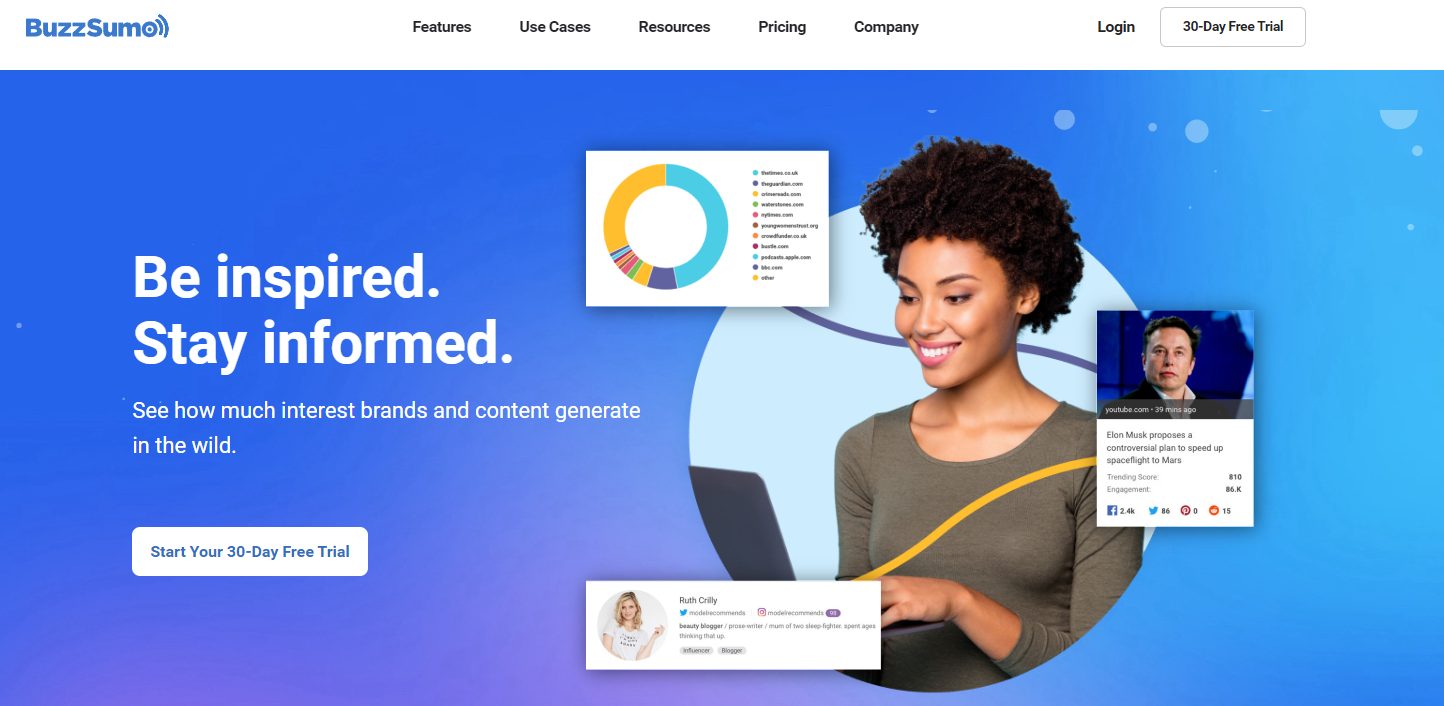
Source: Buzzsumo.com
You input your general podcast theme and let the AI work its magic.
It will analyze recent content performance across social media and search engines and give you ideas for your podcast topic.
You could then use natural language processing (NLP) tools like IBM Watson or Google’s Natural Language API to expand on your research.
The idea is that you feed transcripts of top-performing episodes into these systems.
The tools will then identify common themes and linguistic patterns you can use in your podcast.
Next comes the deeper planning part.
This is the part I suggest you do manually.
With all the ideas in front of you, you can put the right ideas first and decide on the sequence of your episodes.
Once you’ve done that, you can use a tool like ChatGPT as if you’re speaking to a friend for advice.
Ask it to critique your podcast episode list and provide fresh ideas from a “fresh set of eyes”.
Imagine how valuable that would be.
Step 2: Create Your Podcast Scripts
A tool like Claude can kickstart your script creation process.
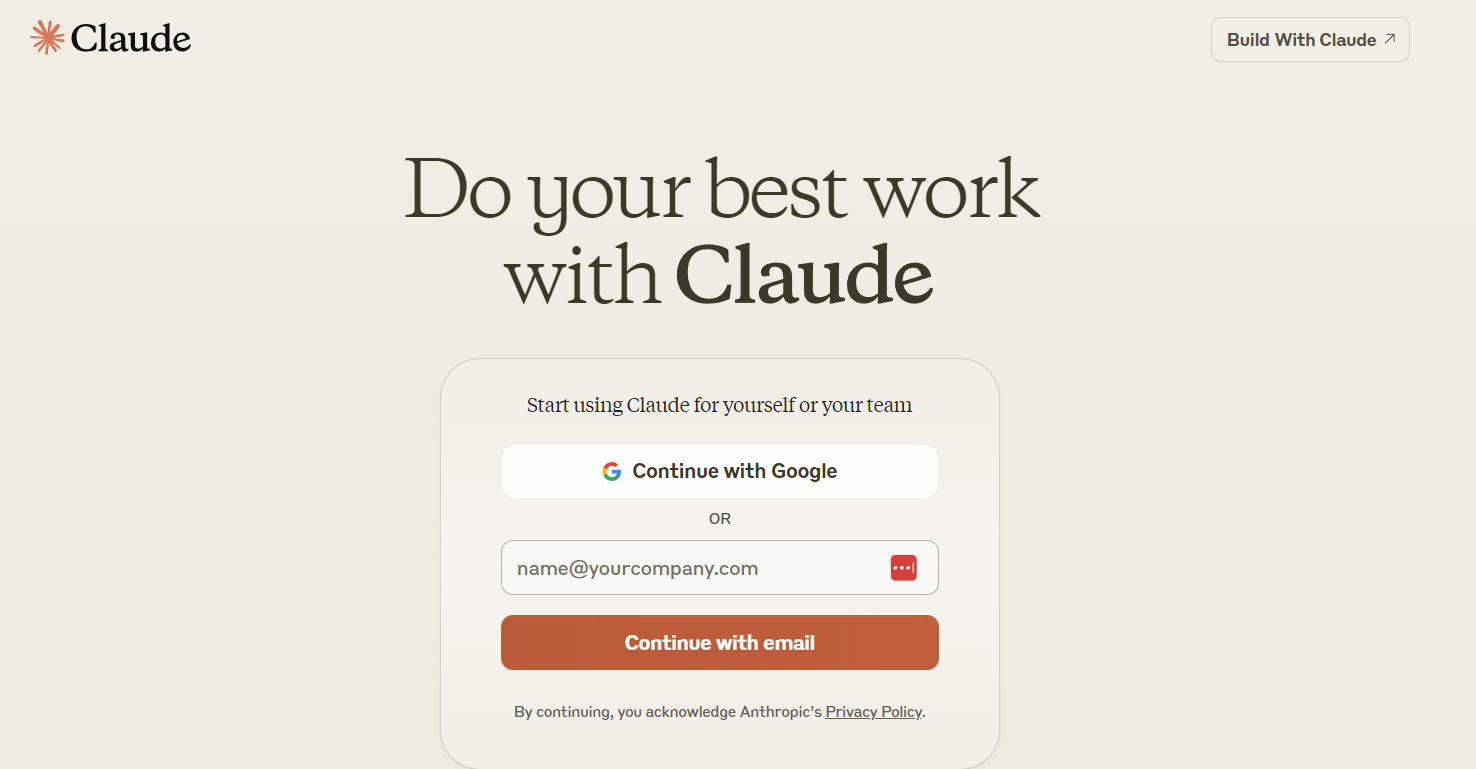
Source: Claude.ai
Here’s all you have to do: provide a brief episode outline and let the AI generate an initial draft.
But remember, this is just a starting point – your job is to refine and personalize the content.
Personalizing content means:
- Adding your own stories
- Sharing life experiences
- And making it sound like you.
When you’re done, run your draft through AI writing assistants like Grammarly or ProWritingAid.
These tools will help you enhance flow, improve pacing, and ensure clarity.
They’ll even suggest transitions and give you readability scores.
But that’s not all.
You’ve got to supplement your script with AI-curated content.
Use tools like Perplexity AI to gather the latest research, statistics, and expert opinions on your topic.
It’s like having a team of researchers at your fingertips!
Step 3: Get The Best Audio
Now, let’s talk about audio production.
Here’s the deal: start by recording your raw audio as usual.
Then, leverage AI audio enhancement tools like the Enhance tool with Adobe Podcast to clean up your recording.
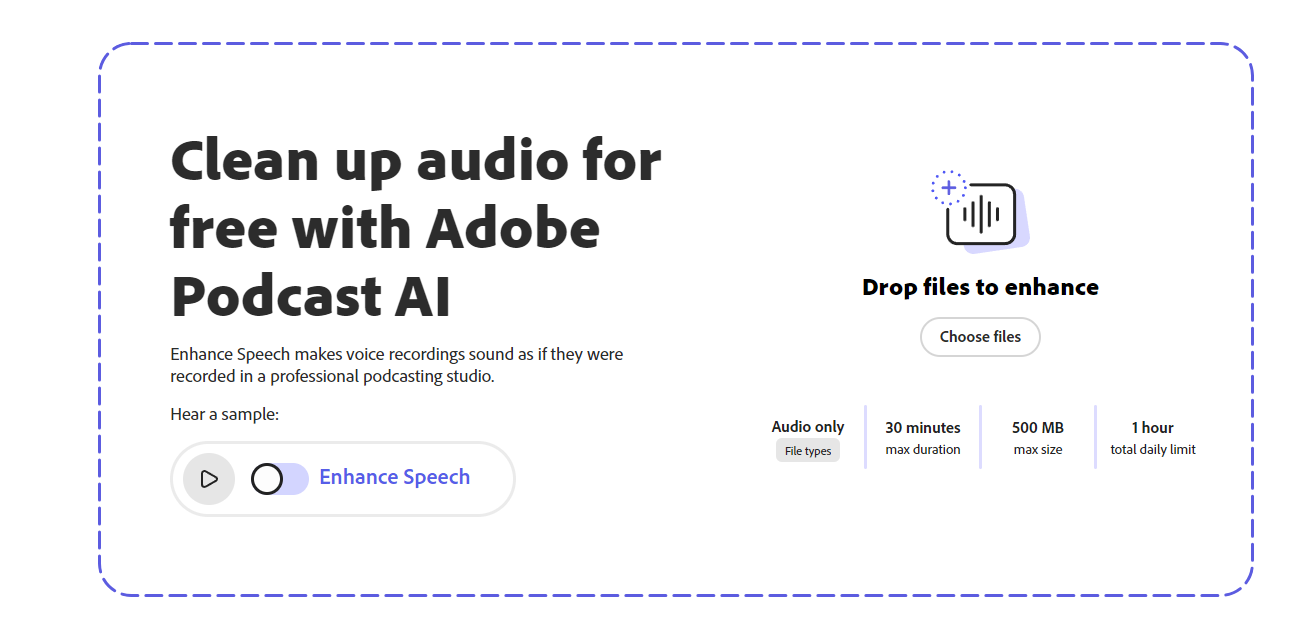
Source: Adobe Podcast
But here’s the kicker: AI voice synthesis technology like Descript’s Overdub or Resemble.ai can create a voice clone.
Imagine making minor edits or creating consistent intros and outros without re-recording.
Mind-blowing, right?
And it gets even better if you want to go pro with your audio.
Apply automated sound mixing using tools like LANDR or eMastered.
You won’t believe how well these AI-powered systems can:
- balance your audio levels
- apply appropriate EQ and
- add compression
…to give your podcast a professional sound.
Finally, use speech-to-text AI like Otter.ai or Rev‘s automatic transcription to create a text version of your episode.
This transcript will be a game-changer for the next steps.
Step 4: Work On The Text Version
Let’s dive into post-production.
AI summarization tools like SMMRY or Quillbot can create concise episode summaries from your transcript.
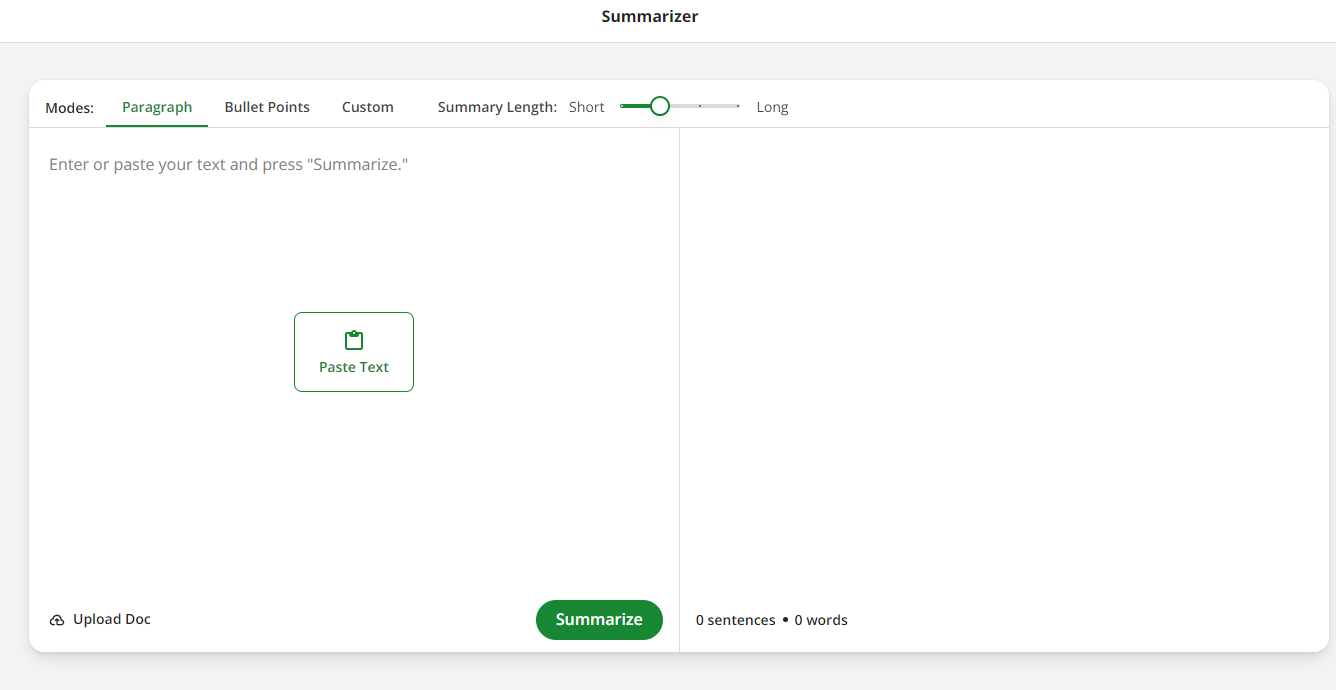
Source: Quillbot
Can you see how useful that is for:
- show notes
- social media posts and
- podcast platform descriptions?
But wait, there’s more!
If you’re targeting an international audience, here’s a game-changer to implement: AI translation services like DeepL or Google Cloud Translation API (if you’re more technical).
These can create multilingual versions of your show notes and episode descriptions.
Step 5: Promote Your Episode
Now, let’s talk about promotion.
Here’s something you might not know: AI-driven advertising platforms like Acast or SiriusXM podcast network use machine learning to target your ads to the most receptive audiences.
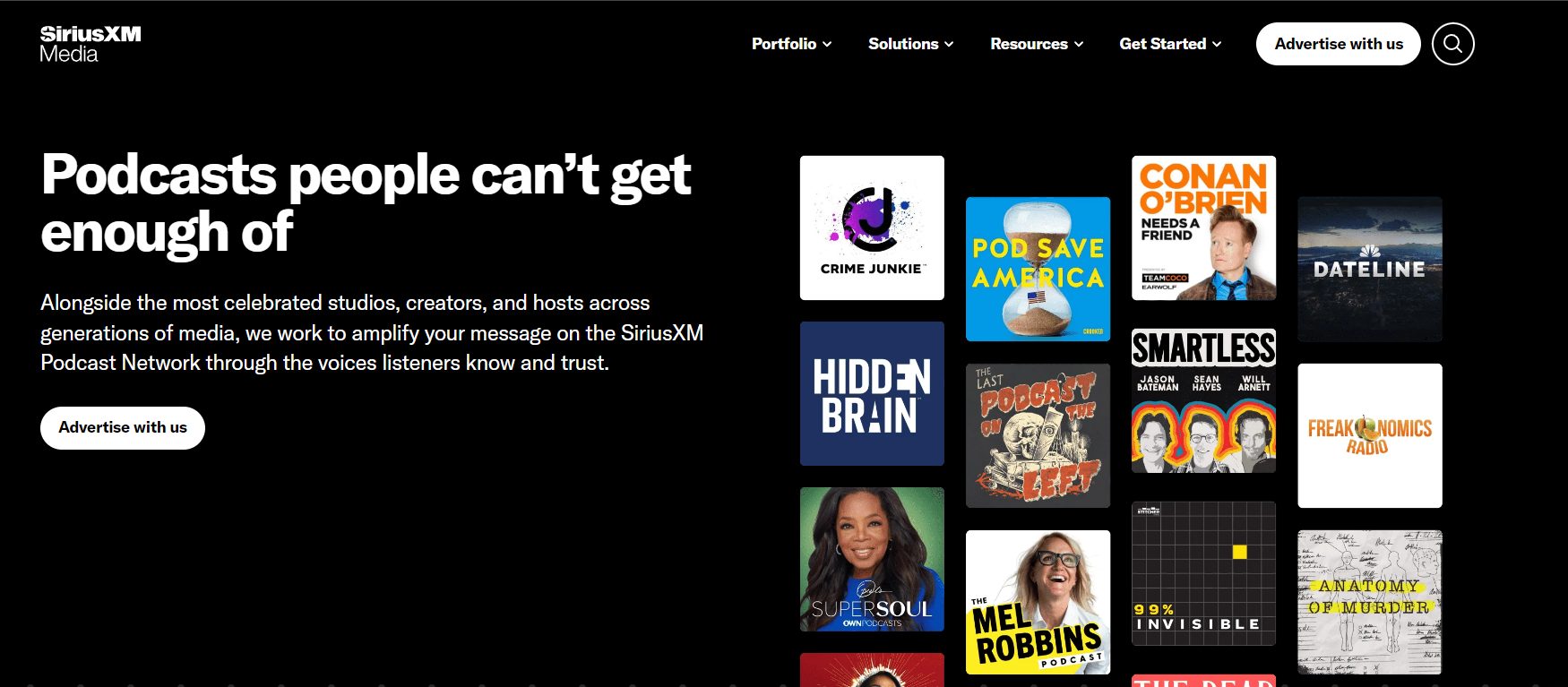
Source: SiriusXM podcast network
It’s like having a marketing expert working 24/7 for you!
And it gets better.
Automated podcast distribution using tools like Buzzsprout or Transistor.fm can optimize your publishing schedule and distribute your episodes across all major podcast directories.
It’s like having a distribution team at your fingertips!
When you have a few podcasts under your belt, you can also leverage AI-powered social media tools like Hootsuite Insights or Sprout Social.
Why?
Because they can identify what your audience is saying about your podcast and the most engaging types of content to create.
Finally, if you have a blog and want to make the most of your text content, use AI SEO tools.
Tools like Yoast SEO or Clearscope can optimize your episode titles, descriptions, and show notes.
These tools can really boost your podcast’s visibility in search results.
Step 6: Analyze Your Podcast’s Performance
Platforms like Spotify or Apple Podcasts are invaluable for identifying how your show is doing.
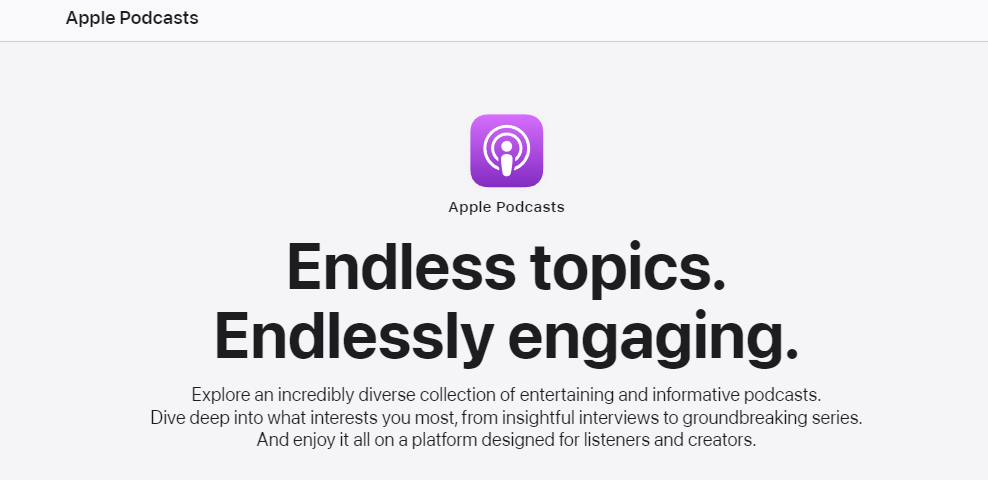
Source: Apple Podcasts
With this knowledge, you also open up collaboration opportunities with the right audiences.
And when you know what’s working, you can use AI trend forecasting tools to identify emerging topics in your niche.
Getting in early on these trends means you get a big audience to see you as the authority on the topic.
Here you can use tools like Google Trends (free) and Exploding Topics (free and paid) to get the job done.
Think of it as having a crystal ball for your podcast’s future.
Step 7: Monetize Your Podcast
Did you know AI can help you monetize your content more effectively?
Start by using AI-powered ad networks like Podcorn or AdBarker.
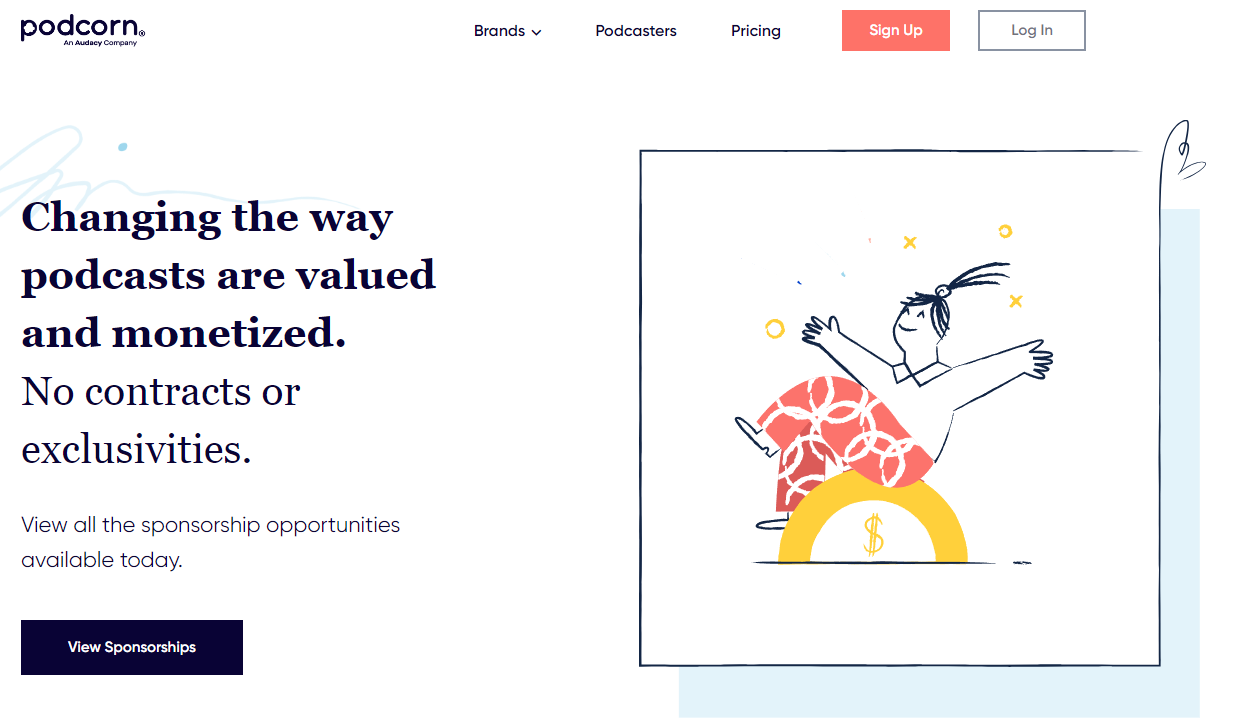
Source: Podcorn
These platforms match your podcast with relevant advertisers.
They also ensure you get the best deals based on your audience size and niche.
And here’s a cool trick: use a dynamic ad insertion tool like Spreaker.
This platform allows you to insert ads into your episodes without lifting a finger.
Automagically, you can tailor ads to different audience segments and keep your content fresh.
But there’s more.
AI tools like Patreon or Supercast can help you set up and manage subscription-based monetization.
These platforms analyze your audience’s behavior and suggest the best membership tiers and perks.
Here’s another way to sell (more) products.
Leverage AI-driven affiliate marketing platforms like Refersion, ClickBank or ShareASale.
These tools help you find and promote products or services your audience will love.
The result?
You earn a commission on every sale.
Costs and Limitations of AI in Podcasting
Now, let’s discuss the flip side of using AI in podcasting.
While AI can be incredibly powerful, it’s not without its drawbacks.
Subscription Fees
AI tools often come with subscription fees and can add up quickly.
When you’re just starting out, the last thing you’ll want to do is foot the bill for hundreds of dollars.
That said, there are (always) ways to mix manual work with AI tools to get similar results.
Creative Limitations
AI often struggles with nuance and humor.
It’s great at facts, but capturing the essence of your unique podcast voice is a challenge.
This limitation means there’s a risk of losing your originality.
How do you stand out if everyone uses the same AI tools?
Over-reliance on AI can be a real problem.
AI can also struggle with complex topics or handling guest interviews.
It’s not great at improvising or diving deep into nuanced discussions.
Just remember that AI can make mistakes.
Factual errors can slip through, potentially damaging your credibility.
Alternatives to AI Tools
You might favor using AI for some tasks but not for others.
And that’s how I believe it should be.
Here are alternatives to using AI in the different stages of podcast creation.
First up, manual research methods.
Here’s the thing: online searches, databases, and industry publications are still goldmines of information.
And don’t forget networking!
Talking to experts in your field can give you insights that AI might miss.
But what about content creation?
Sometimes, nothing beats sitting down and writing your own script.
Or, if you prefer, hire a freelance writer who can capture your unique voice.
And for topic ideas?
Try traditional brainstorming techniques.
You might be surprised at what your brain can come up with.
When it comes to audio editing, start with basic software.
There are plenty of free or low-cost options out there with core functionalities.
Finally, learning basic editing skills gives you a hands-on approach.
You’ll be able to know what you like (and don’t).
Then, even when (or if) you use AI, you’ll know what output you want to get.
Conclusion
With the right tools, podcast planning and AI go together like salt and pepper.
Instead of spending hours planning and brainstorming, you can now find trending topics in minutes.
AI tools can also understand your audience and suggest content ideal for them.
Plus, you get insights that you might have missed on your own.
AI can help you plan, write, produce, and promote your podcast like never before.
Why not give it a try?
Further reading on AdamEnfroy.com: Curious about what a podcast is and how they work? Learn all about it in this comprehensive overview.
For those just starting, this free guide on how to start a podcast is also a great resource.
If you’re looking to host your podcast, here are the best podcast hosting platforms.
Then, when you want more content, check out these solo podcast ideas.
Additionally, mastering the technical side is crucial.
Here’s a detailed guide on how to record a podcast, along with a podcast starter kit featuring the essentials you’ll need.





